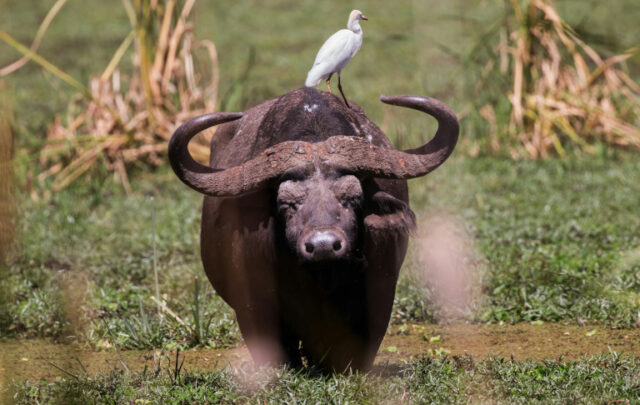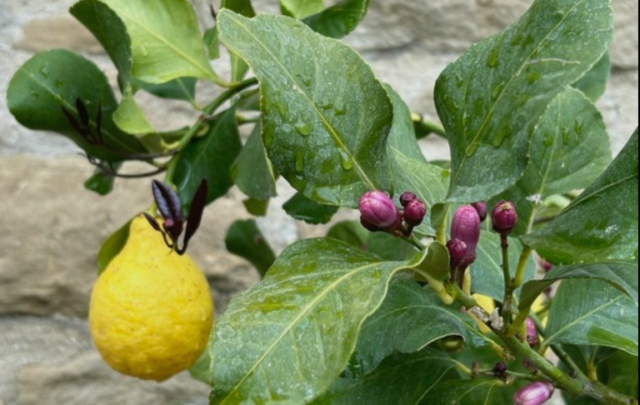
About ten years ago, I planted some bibb lettuce, and though it is my favorite kind (Buttercrunch), I haven’t planted it in the garden since then. Haven’t had to. It comes up every year all on its lonesome. All I have to do is not take care of it very well, that is let it go to seed and sprawl all over. Nature does the rest. The lettuce blooms and reseeds itself helter-skelter. All I have to do is keep the tiller away when the seedlings come up in early spring. The neat thing about it is that, as you can see from the photo, the lettuce grows so thickly that hardly any weeds grow up in it, but only around it.
This non-gardening drama repeats itself every year. The most amazing aspect of it, and I don’t know why, is that this “wild” lettuce is ready to eat before the lettuce that I plant early in the cold frame, coddled with compost and protected with a plastic cover on cold nights. The “wild” lettuce grows faster. If I had any brains, I would quit the cold-frame lettuce, but so far I just don’t have enough faith in nature to do it.
Nor does this “wild” lettuce show any signs of decreasing in quality or taste. I presume that coming from seed now for many years, it does not carry the hybrid vigor or quality of the original Buttercrunch but it makes mighty fine lettuce anyway.
Non-gardening, or as my very particular sister calls it, “slop-gardening,” works for radishes, kale and sometimes broccoli in my experience. I would assume that with a little luck and laziness, anything that matures seed in one season can be non-gardened.
If when harvesting potatoes, you miss some, they will sprout and grow in the Spring if they are in the ground deep enough not to get frozen over winter. They grow just as well as the new crop I plant in the standard manner. I have often considered planting my spuds in the fall rather than spring and not have to battle mud and early frost in spring planting. But again, I don’t have enough faith.
Onions growing from onion sets, left in the garden in the fall will often overwinter and grow new tender, little stalks very early in the spring. Peas allowed to mature from an early crop will drop seed which will sprout and grow if you get sufficient August and September rains. Mine are usually too late to make peas before frost but I know gardeners who regularly plant peas for a fall crop and get one.
A non-garden will of course look the part. It will be all raggedy-annie and will require some hand-weeding. But if you can rid yourself of the Germanic impulse that most of us carry in our genes and get accustomed to a lack of weedless, straight row-ness, you soon realize that you don’t need an absolutely weed-free garden to get food from it. And of course, some of the weeds taste good too.
I don’t imagine that non-gardening will ever become popular because it requires, as I keep saying, in a trust in nature or in fate that few of us are willing to stake our food supply on. But it is fun to think about. When I was a child on the farm, we picked lots of food from the wild including strawberries and raspberries and many other kinds of wild fruits and nuts. My wife’s family picked wild blackberries for market. Dandelions were the usual early spring salad. But we never thought that perhaps most of our garden food could come from wild-like plantings. We had passed from the hunting and gathering era of human progress and by heaven we were going to sweat and slave to get our food from a settled, stable agriculture and horticulture.
Asparagus comes closest of all our domesticated vegetables to being a product of non-gardening and indeed it does grow wild and many people gather it that way. And now I know that I can trust nature to give me plenty of lettuce without having to plant the stuff. I keep asking myself how far in this direction a crafty gardener might go. I keep hoping someone will do it. As I say, I just don’t have enough faith yet.
~~
Gene and Carol Logsdon have a small-scale experimental farm in Wyandot County, Ohio.
Gene is author of The Mother of All Arts: Agrarianism and the Creative Impulse (Culture of the Land), The Last of the Husbandmen: A Novel of Farming Life, and just released: Small-Scale Grain Raising, Second Edition: An Organic Guide to Growing, Processing, and Using Nutritious Whole Grains, for Home Gardeners and Local Farmers.





